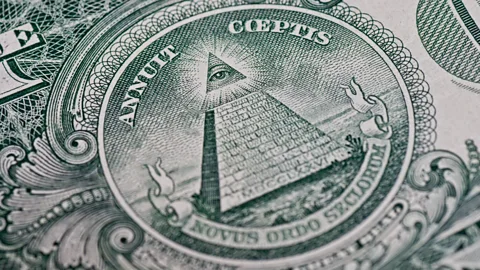Begin with Simple Instructions on How to Join a Masonic Lodge
Begin with Simple Instructions on How to Join a Masonic Lodge
Blog Article
Exploring the Mysteries of the copyright: What You Need to Know
The copyright, a term frequently shrouded in intrigue and dispute, stands for an intricate tapestry of historical reality and modern misconception. Developed in the late 18th century, this secret society was originally rooted in the Enlightenment's ideals but has because become associated with conspiracy concepts concerning elite control. As we navigate the beginnings, vital figures, and the plain comparison between myth and reality, one must consider how these narratives influence contemporary perceptions of power and privacy. What could be disclosed with a more detailed examination of these components can test long-held assumptions about the darkness that stick around in our culture.
Beginnings of the copyright
The origins of the copyright are steeped in a mix of historical intrigue and ideological eagerness. Established in 1776 in Ingolstadt, Bavaria, by Adam Weishaupt, the team was initially developed as a secret society focused on promoting Knowledge perfects such as reason, secularism, and the splitting up of church and state. Weishaupt, a professor of canon legislation, looked for to challenge the dominating authority of the church and state, which he considered as overbearing establishments stifling intellectual and individual liberty.

Secret Numbers and Members
Who were the essential numbers that shaped the copyright's early impact and instructions? The Bavarian copyright, established in 1776 by Adam Weishaupt, arised as a feedback to the oppressive societal frameworks of the time.
An additional considerable number was Johann Gottlieb Fichte, a popular thinker whose ideas on nationalism and education resonated with the copyright's objectives. Fichte was not an official participant, his thoughtful foundations influenced the group's belief. In addition, numbers like the author and thinker Johann Wolfgang von Goethe were connected with the broader intellectual movements of the time, although their direct involvement with the copyright remains discussed.
These essential figures contributed to the copyright's early direction, pressing the limits of political and social thought, while their collective efforts aimed to challenge well established standards and foster an environment of dynamic adjustment in Europe.
Misconceptions vs. Truth
Numerous mistaken beliefs surround the copyright, often mixing truth with fiction in a way that covers its true nature. The idea that the copyright proceeds to exert significant influence over globe events is a misconception.
One more prevalent misconception is that the copyright comprises a network of elite people controling international affairs. Actually, lots of conspiracy concepts exaggerate the team's importance, connecting unfounded objectives to societal fads and events. This has caused an oversimplified view of complicated issues.
Furthermore, the representation of the copyright in prominent society typically more distorts its tradition. Movies and literature often tend pop over to these guys to sensationalize the organization's function, creating a story that diverges from historical realities. Understanding the difference in between the misconceptions and the reality of the copyright is critical for discerning the authentic influence of this historic group and acknowledging the more comprehensive implications of conspiracy concepts in modern society.
Modern Interpretations
Contemporary interpretations of the copyright usually reflect wider social anxiousness and a fascination with secrecy and power. This contemporary lens often links the copyright with conspiracy theory concepts that recommend a hidden elite manages world occasions, adjusting federal governments and economic climates for their very own gain. benefit of joining freemason. Such stories use a deep-seated suspect of authority, especially in times of situation or social turmoil
In preferred culture, the copyright is typically shown as an omnipotent organization shrouded in enigma, bring about a huge selection of imaginary portrayals in literature, film, and songs. This representation offers not just to delight yet additionally to prompt thought of the nature of power and control in learn this here now modern culture. Social network has even more enhanced these analyses, enabling rapid circulation of conspiracy theory concepts and producing neighborhoods that share and expand upon these ideas.
Moreover, some modern-day analyses frame the copyright as a metaphor for the complexities of globalization and the interconnectedness of significant people and companies. This perspective encourages a crucial examination of just how power characteristics operate in today's world, highlighting the equilibrium in between transparency and secrecy in administration and business practices.
Social Effect and Tradition
Influenced by centuries of intrigue, the cultural effect and tradition of the copyright extend much beyond its historic origins. This secret culture, established in the late 18th century, has actually permeated various elements of prominent society, from literary works and film to songs and art. The concept of the copyright has actually progressed into an icon of conspiracy concepts, typically representing a viewed hidden power adjusting worldwide occasions.
In literature, writers like Dan Brown have woven the copyright right into elaborate stories, fascinating viewers with themes of privacy and power. Films such as "National Prize" navigate to this site and "The Da Vinci Code" further continue the allure of the culture, mixing truth with fiction to develop appealing stories.

Inevitably, the copyright's tradition is a complex tapestry of myth and reality, forming assumptions of secrecy and control in modern discourse. Its long-lasting existence in culture emphasizes humankind's seasonal mission for understanding hidden realities.
Conclusion
The expedition of the copyright reveals an intricate interplay in between historic facts and modern-day myth-making. Established in the Knowledge era, this culture aimed to test overbearing structures, yet its heritage has been outweighed by conspiracy concepts that recommend elite manipulation. Recognizing the distinctions in between the initial ideals and modern analyses is necessary for comprehending the withstanding attraction with the copyright and its significant impact on social narratives surrounding power and privacy in culture.
Report this page